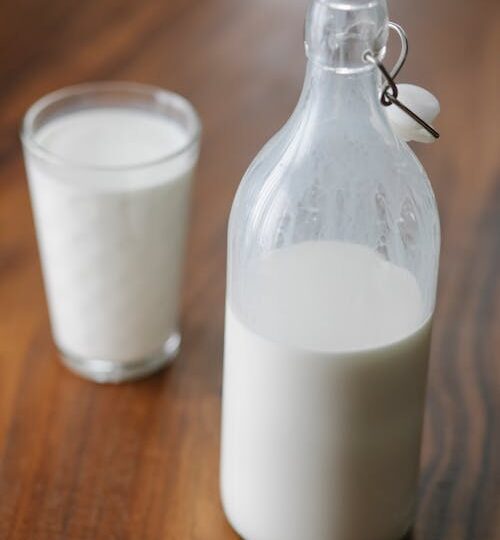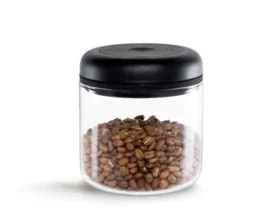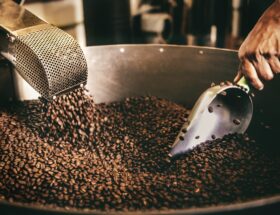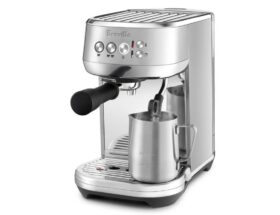
Unveiling the Creamy Secret: What is Soy Creamer Made Of?
In this blog post, we will delve into the intriguing world of soy creamer and uncover its creamy secret. We will explore what soy creamer is made of and how it is produced. Did you know that soy creamer is derived from soy milk? That’s right! Soybeans go through a meticulous process involving soaking, grinding, and boiling in water to create soy milk. This soy milk is then combined with water and thickened using various ingredients to achieve a smooth and creamy consistency. Get ready to learn all about this dairy-free alternative and discover what makes it so popular among coffee enthusiasts. So grab a cup of joe and let’s dive into the creamy world of soy creamer!
Table of Contents
The Creamy Delight: Soy Creamer
For many coffee enthusiasts, a steaming cup of coffee in the morning is not complete without a splash of creamy goodness. While traditional dairy creamers have long been a popular choice, an increasing number of people are turning to soy creamer as a delicious alternative. But what exactly is soy creamer made of?
What is Soy Creamer?
Soy creamer is a non-dairy alternative to traditional creamer, perfect for those who prefer to avoid dairy products due to dietary restrictions, allergies, or personal preference. The primary component of soy creamer is soy milk, derived from soybeans, which undergo a process involving soaking, grinding, and boiling in water.
Once the soy milk is obtained, it is combined with water and other ingredients to create a smooth and creamy texture. Depending on the desired consistency, various thickeners, stabilizers, and emulsifiers may be added to give the soy creamer a rich mouthfeel.
The Ingredients
- Soy Milk: As mentioned earlier, soy milk is the key ingredient in soy creamer. It is made by soaking and grinding soybeans, followed by boiling and straining the mixture to obtain a liquid similar to dairy milk.
- Water: Water is used to dilute the soy milk and achieve the desired consistency of the creamer. The proportion of water added may vary depending on the brand and formulation.
- Thickeners: To give the soy creamer its creamy texture, thickeners are added. Common thickeners include carrageenan, guar gum, or xanthan gum. These ingredients help create a smooth consistency that enhances the overall coffee experience.
- Stabilizers: Stabilizers are added to prevent separation and maintain the emulsion of the soy creamer. They help keep the water and fat components of the creamer blended together, ensuring a consistent texture. Popular stabilizers include dipotassium phosphate or monocalcium phosphate.
- Emulsifiers: Emulsifiers work alongside stabilizers to enhance the texture and blend the soy milk and water. Common emulsifiers in soy creamer include soy lecithin, which helps prevent oil and water from separating.
Soy Creamer Varieties
Soy creamer comes in various forms, including liquid and powder options. Liquid soy creamer is convenient and easy to use, allowing coffee lovers to simply pour it straight into their cup. On the other hand, powdered soy creamer can be a great option for those who prefer a more concentrated flavor or those who want to customize the thickness of their creamer by adding more or less water.
Regardless of the form, soy creamer is often available in a range of flavors, such as vanilla, caramel, or hazelnut, allowing coffee aficionados to personalize their morning brew even further.
The Benefits of Soy Creamer
Soy creamer offers several advantages for those who choose to incorporate it into their daily coffee ritual:
- Non-dairy alternative: Ideal for those who are lactose intolerant or follow a vegan lifestyle.
- Lower in saturated fat: Unlike traditional creamers, soy creamer generally contains less saturated fat, which can be beneficial for heart health.
- Cholesterol-free: Soy creamer is of plant origin, making it free of cholesterol.
- Source of protein and essential vitamins: Soy milk is known for its protein content and often contains added vitamins and minerals.
So, the next time you reach for that perfect cup of coffee, consider adding a touch of soy creamer to enhance the flavor and achieve that delightful creamy consistency. With its unique composition and numerous benefits, soy creamer opens up a world of possibilities for coffee enthusiasts who prefer a plant-based alternative.
Step-by-Step Guide: Making Your Own Soy Creamer
Step 1: Soak and Prep the Soybeans
Start by measuring out one cup of dried soybeans and rinse them thoroughly under running water. Place the soybeans in a large bowl and cover them with water. Let them soak overnight or for at least 8 hours to soften.
Use organic soybeans for a healthier and more environmentally friendly option.
Step 2: Blend and Strain the Soybeans
Drain the soaked soybeans and transfer them to a blender or food processor. Add two cups of water and blend until smooth. You may need to do this in batches depending on the size of your blender.
Once blended, strain the mixture using a cheesecloth or nut milk bag to separate the soy milk from the solids.
Don't discard the leftover soybean solids, known as okara. It can be used in baking or as a nutritious addition to recipes.
Step 3: Cook the Soy Milk
Pour the strained soy milk into a saucepan and heat it over medium-low heat. Stir occasionally to prevent the milk from scorching.
Bring the soy milk to a gentle boil and then reduce the heat to low. Let it simmer for about 20 minutes, stirring occasionally.
Add a pinch of salt or sweetener like agave syrup or vanilla extract for flavor, if desired.
Step 4: Thicken and Customize
To achieve a creamy consistency, you can choose between liquid or powder options for thickening your soy milk creamer.
- If using a liquid thickener, add one tablespoon of agar flakes or cornstarch to the simmering soy milk and continue stirring until the mixture thickens.
- If using a powder thickener, dissolve one tablespoon of soy protein isolate or powdered soy milk in a small amount of water before adding it to the simmering soy milk. Stir well to incorporate.
Experiment with additional flavors like cinnamon, cocoa powder, or almond extract to personalize your soy creamer.
Step 5: Cool and Store
Turn off the heat and let the soy creamer cool to room temperature. Once cooled, transfer it to a well-sealed container, such as a glass bottle or jar, and refrigerate.
Your homemade soy creamer can be stored in the refrigerator for up to a week.
In Conclusion
Now that you know the secrets behind soy creamer, you can enjoy a dairy-free and flavorful addition to your coffee. Making your own soy creamer allows you to control the ingredients, flavors, and consistency, making your coffee experience even more delightful.
Remember, practice makes perfect, so don't be discouraged if your first attempt doesn't turn out exactly as expected. Keep refining the recipe to suit your taste preferences.
In conclusion, soy creamer is a wonderful alternative to traditional dairy creamer for those who are lactose-intolerant or looking to reduce their dairy consumption. Made primarily from soy milk, soy creamer offers a smooth and creamy consistency that complements any cup of coffee.
Whether in liquid or powder form, soy creamer is created by combining soy milk with water and thickening agents. The result is a deliciously creamy addition to your favorite coffee beverages.
If you’re curious about other coffee-related topics, be sure to visit Ten Coffees website, where you’ll find a wealth of information on topics like Vietnamese coffee, Hario V60 brewing, and siphon coffee. Join the discussion by leaving a comment and don’t forget to explore the many informative articles on Ten Coffees.
So why not give soy creamer a try? Elevate your coffee experience with the creamy goodness of soy milk creamer. Your taste buds will thank you.
Please leave a comment below and let us know your thoughts on soy creamer. Have you tried it before? Do you prefer it over traditional dairy creamer? We’d love to hear from you!









